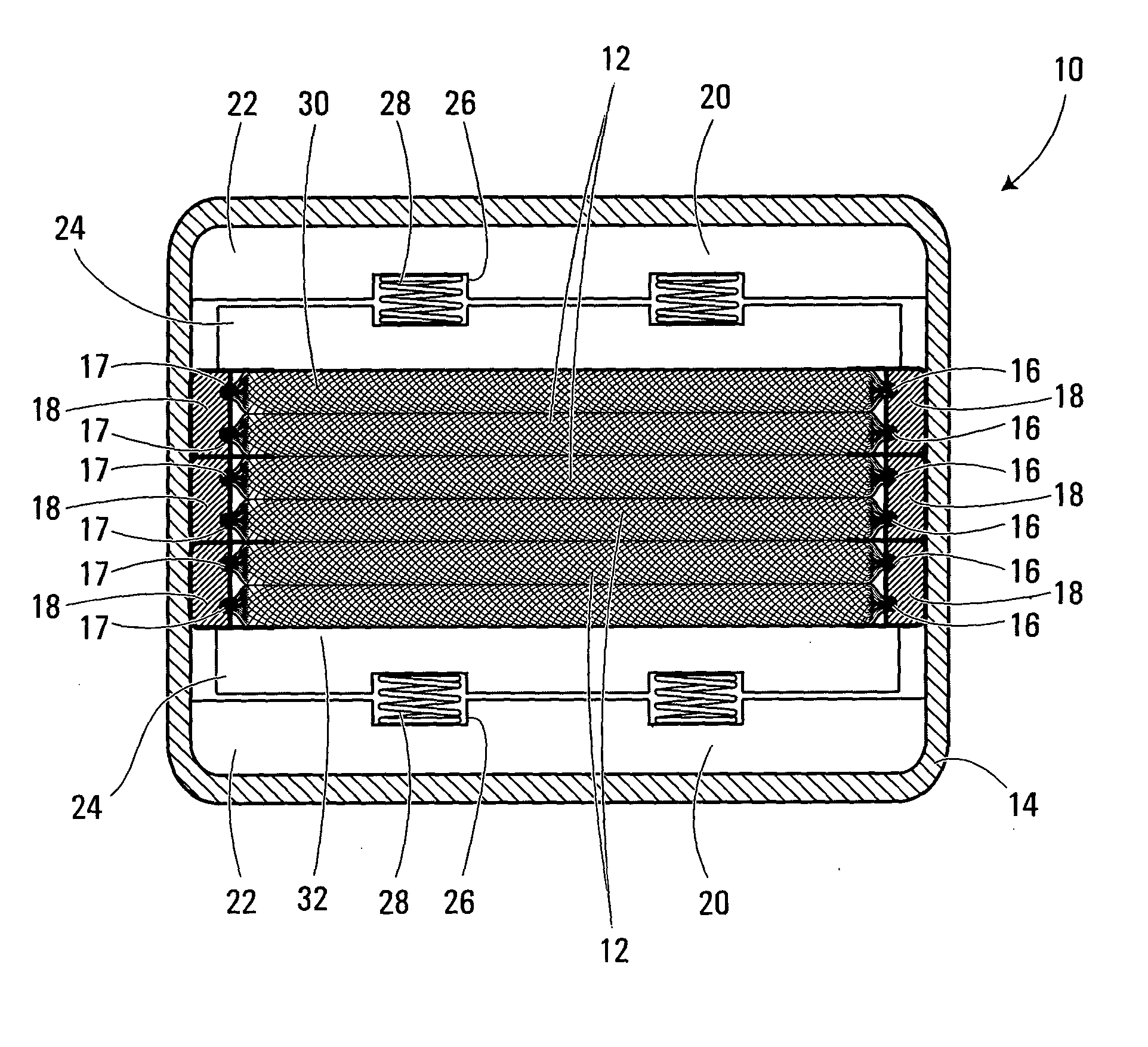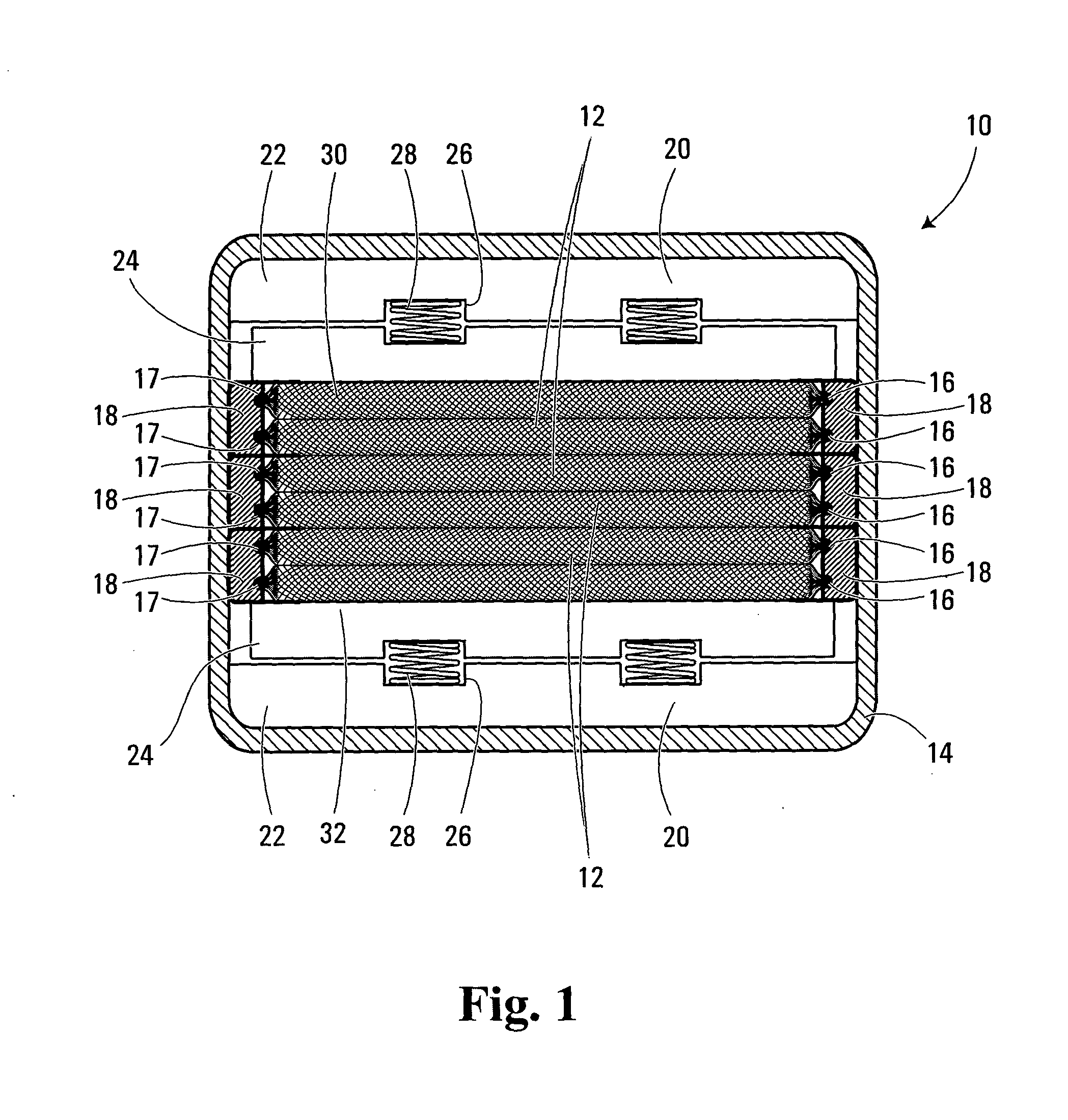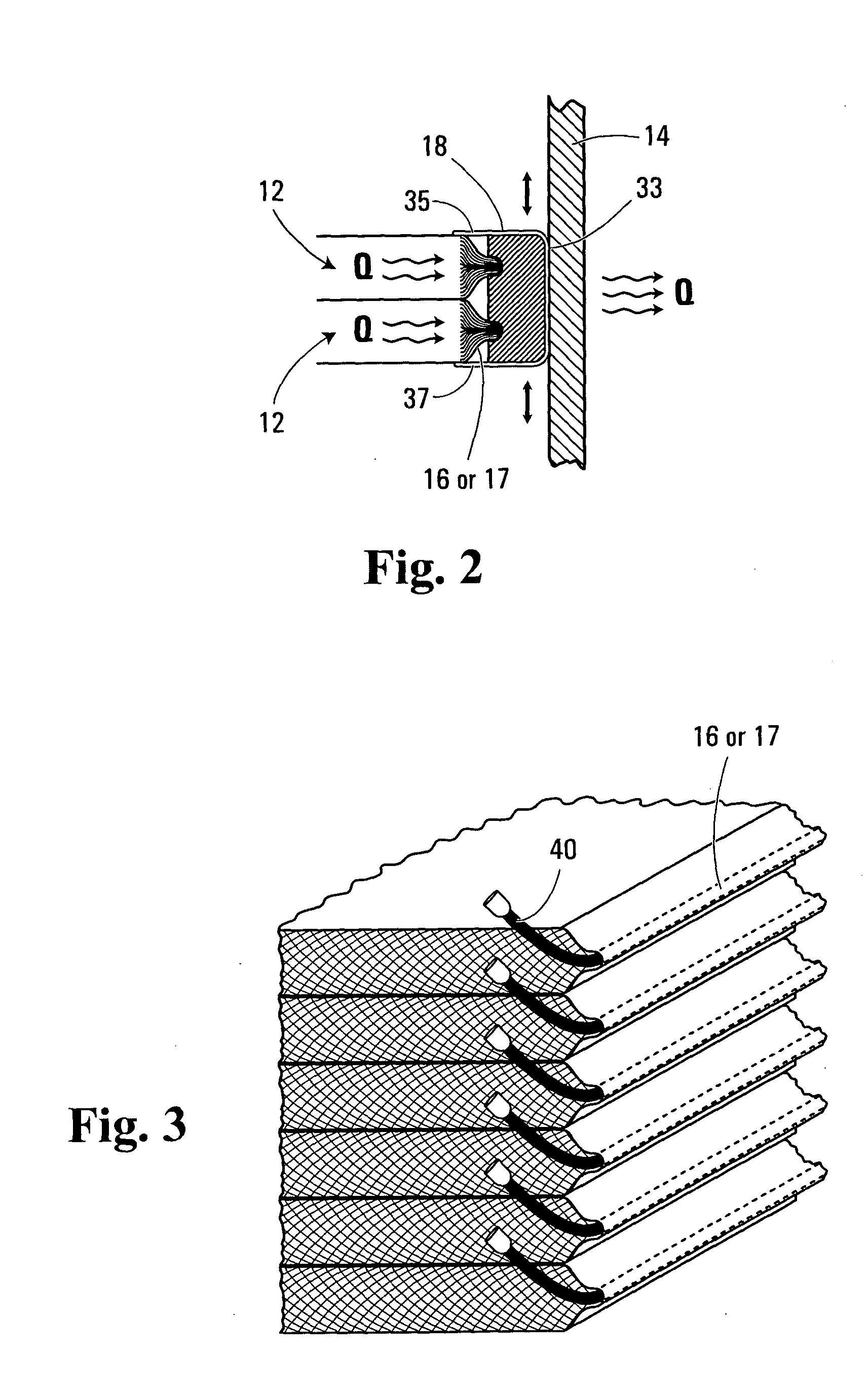Polymer batteries having thermal exchange apparatus
a polymer battery and thermal exchange technology, applied in the field of polymer batteries, can solve the problems of thermal runaway condition, irreversible damage to the electrochemical cells, insufficient heat dissipation from internal portions of the polymer electrochemical cell battery, and additional challenges to the thermal exchange mechanism, so as to achieve the effect of dissipating thermal energy
- Summary
- Abstract
- Description
- Claims
- Application Information
AI Technical Summary
Benefits of technology
Problems solved by technology
Method used
Image
Examples
Embodiment Construction
[0026] In FIG. 1, there is shown for illustration purposes a specific, non-limiting example of implementation of a polymer battery 10 configuration comprising a prismatic assembly of electrochemical cells 12 stacked together. The polymer battery 10 comprises a housing or enclosure 14, a series of stacked electrochemical cells 12 each comprising a plurality of individual electrochemical laminates connected together in parallel by current collecting terminals 16 and 17, resilient heat sink pads 18 positioned adjacent the current collecting terminals 16 and 17 and in intimate mechanical contact with the terminals 16 and 17, and a pressure system 20 located at each end of the electrochemical cells stack and adapted to maintain under pressure the electrochemical cells 12. Individual electrochemical laminates generally comprise an anode layer, a polymer electrolyte separator layer, a cathode layer and at least one current collector. Each electrochemical laminate typically has a thickness ...
PUM
| Property | Measurement | Unit |
|---|---|---|
| thickness | aaaaa | aaaaa |
| thickness | aaaaa | aaaaa |
| thickness | aaaaa | aaaaa |
Abstract
Description
Claims
Application Information
 Login to View More
Login to View More - R&D
- Intellectual Property
- Life Sciences
- Materials
- Tech Scout
- Unparalleled Data Quality
- Higher Quality Content
- 60% Fewer Hallucinations
Browse by: Latest US Patents, China's latest patents, Technical Efficacy Thesaurus, Application Domain, Technology Topic, Popular Technical Reports.
© 2025 PatSnap. All rights reserved.Legal|Privacy policy|Modern Slavery Act Transparency Statement|Sitemap|About US| Contact US: help@patsnap.com



